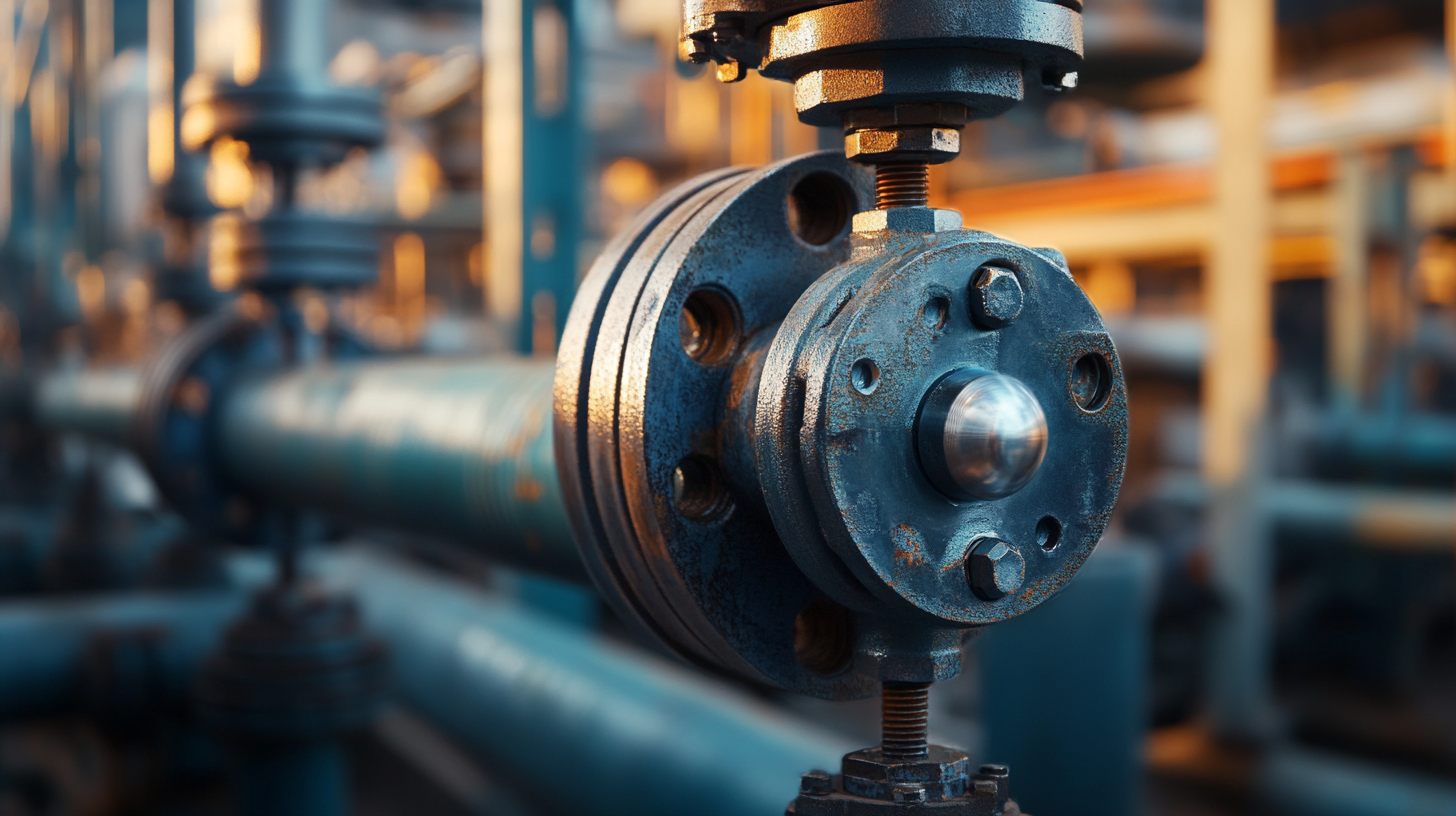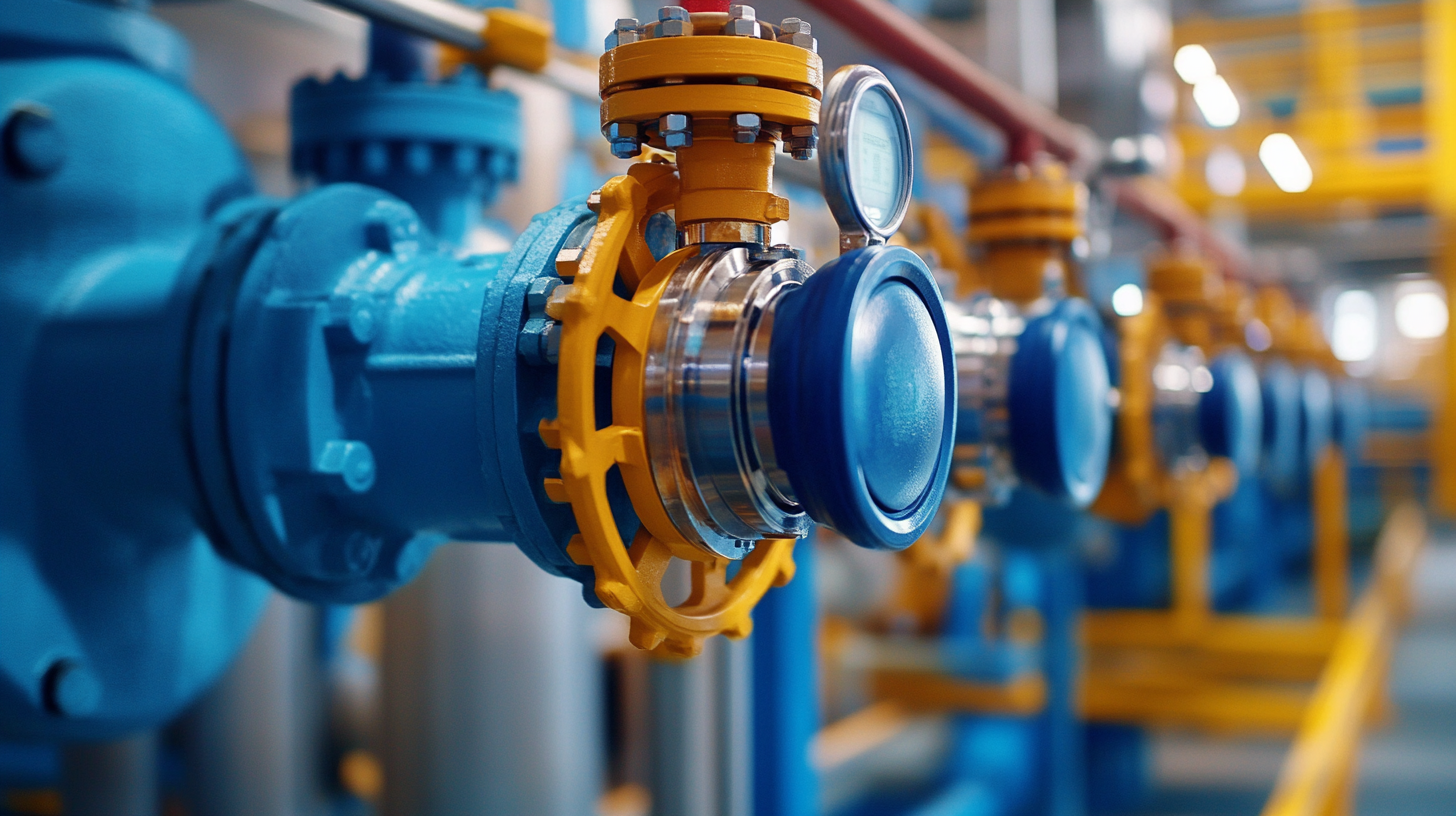
-
Home
-
Products
-
About Us
-
Application Cases
-
CLIENT & FACTORY
-
Test
-
News
-
Contact Us
Leave Your Message

In the realm of industrial operations, the efficiency and reliability of fluid control systems are paramount. One crucial component that significantly enhances these aspects is the Double Ball Valve. Known for its exceptional performance, this valve type allows for effective isolation and flow regulation in various applications. As industries evolve and productivity demands increase, understanding the importance of the Double Ball Valve becomes essential for maximizing operational efficiency. This blog will delve into five compelling reasons why investing in the best Double Ball Valve can lead to improved safety, reduced downtime, and enhanced overall performance in industrial settings. Whether you're in manufacturing, oil and gas, or any field reliant on fluid management, recognizing the value of this component could change the way you approach your operational challenges.

In today's industrial operations, effective flow control is paramount to ensuring efficiency and reliability. Double ball valves are becoming increasingly essential due to their superior performance in various conditions. The enhanced flow control provided by these valves minimizes pressure drops and turbulence, which are critical for the longevity of equipment and the smooth operation of processes. Recent innovations, particularly in double traveling valves for traditional sucker rod pumps, showcase the shift towards dual mechanisms that significantly enhance efficiency. For instance, the implementation of double traveling valves has reportedly improved pump performance, leading to better overall productivity, demonstrating a clear trend towards optimizing fluid dynamics in industrial settings.
Moreover, the ability of double ball valves to handle higher flow rates with lower energy consumption makes them an attractive choice for operations aiming to reduce costs while maintaining high performance. The incorporation of advanced flow management technologies in these valves further supports their functionality in reducing cavitation issues that can lead to valve damage and inefficiencies. Research indicates that the utilization of double ball valves can improve system reliability and reduce maintenance requirements, thereby offering a compelling case for their integration in industrial applications. As sectors continue to emphasize efficiency, the role of double ball valves in managing flow control becomes increasingly vital.
In industrial operations, safety is paramount, and one of the critical components that contribute to a secure working environment is the double ball valve. These valves are designed with two balls that regulate the flow of fluids, providing a robust barrier that significantly mitigates risks associated with leaks and spills. Their construction allows for thorough sealing, ensuring that hazardous materials remain contained, thereby protecting workers and the surrounding environment from potential accidents.
Furthermore, double ball valves enhance operational safety by offering redundancy. In the event of a malfunction in one ball, the second ball remains operational, providing a failsafe mechanism that prevents uncontrolled flow. This dual-action feature is particularly crucial in industries handling corrosive or high-pressure fluids, where the consequences of valve failure can be catastrophic. By implementing double ball valves, companies not only comply with stringent safety regulations but also instill confidence among their workforce, knowing that their operations are equipped with reliable and effective safety measures.

In today's competitive industrial landscape, cost efficiency is paramount, and incorporating reliable double ball valve solutions can lead to significant savings. According to a recent industry report by Grand View Research, the global valve market is projected to reach $90.7 billion by 2025, with a notable emphasis on high-quality, efficient valve systems such as double ball valves. Their design minimizes leakage and ensures operational integrity, which directly correlates with reduced maintenance costs. In fact, companies that utilize double ball valves report a 20% decrease in operational downtime due to fewer valve failures.
Moreover, double ball valves excel in controlling flow and isolating systems, which enhances not only safety but also the overall effectiveness of industrial processes. A study by MarketsandMarkets indicates that the adoption of advanced valve technology has led to a 15-25% reduction in energy costs in various sectors. By upgrading to high-performance double ball valves, industrial facilities can significantly lower their energy consumption while maintaining optimal operational efficiency, thus underscoring the financial benefits of investing in superior valve solutions.
Proper maintenance of industrial valves is crucial for the longevity and efficiency of operations.
Double ball valves, in particular, offer significant advantages when it comes to maintenance ease.
According to a report from Research and Markets, the global valve market is expected to reach USD 81.96 billion by 2025, driven in part by advancements in valve technologies that facilitate easier upkeep.
The design of double ball valves allows for straightforward access to internal components, enabling technicians to perform routine inspections and repairs without extensive disassembly.
Moreover, modern double ball valves are often constructed with durable materials that enhance their reliability while reducing the frequency of maintenance interventions.
The 2022 Valve Maintenance Report indicates that facilities utilizing robust valve systems experience a 30% reduction in downtime due to maintenance activities.
The simplified upkeep of double ball valves not only streamlines industrial processes but also significantly minimizes operational costs over time. This efficiency is particularly valuable in industries relying on consistent performance, such as oil and gas or chemical manufacturing, where even minor disruptions can lead to substantial financial losses.

The versatility of double ball valves is increasingly recognized across various industrial applications, as their design can accommodate a wide range of operating conditions and media. According to recent market assessments, the global industrial valve market is projected to grow significantly, driven by advancements in automation and the demands of diverse industries such as oil and gas, water and wastewater, and food processing. This trend underscores the need for reliable and adaptable components, with double ball valves standing out for their ability to handle differing pressure levels and temperatures while maintaining flow efficiency.
In late 2023, the introduction of updated standards for ball valves in food processing highlighted the importance of hygienic design, which directly influences the choice of valves in sensitive applications. The double ball valve, known for its robust sealing capabilities and minimal leak points, offers an essential solution for industries requiring strict compliance with sanitation standards. As manufacturers continue to seek equipment that combines both functionality and compliance, the role of double ball valves becomes more critical in ensuring safe and efficient operations.
Moreover, innovations such as smart electric actuators have enhanced the functionality of traditional valves, further expanding their application range. The integration of advanced technologies into valve operations not only improves precision but also reduces the total cost of ownership, making double ball valves a smart investment for industrial operations looking to optimize performance and reliability.
| Application Area | Importance | Key Features | Typical Medium |
|---|---|---|---|
| Water Treatment | Reliable isolation and control | Durable, corrosion-resistant | Water, chemicals |
| Oil & Gas | Safety and efficiency in flow control | High-pressure resistance | Crude oil, gas |
| Food and Beverage | Maintaining hygiene and quality | Smooth operation, easy cleaning | Water, liquid sugar |
| Chemical Processing | Handling various aggressive chemicals | Chemical resistance and durability | Acids, bases |
| Pharmaceuticals | Ensuring product integrity and safety | Precision flow control | Bioactive compounds |